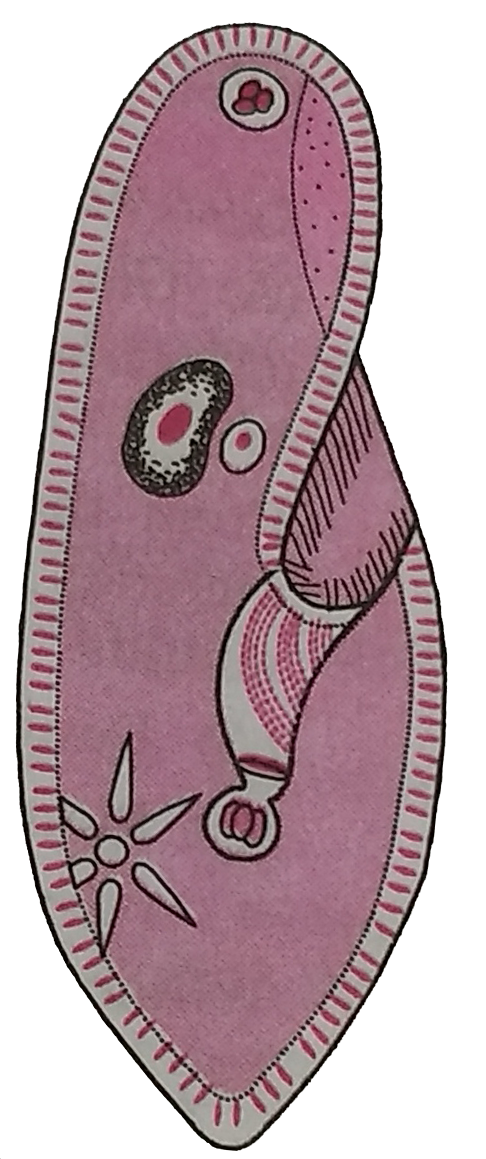Triploid primary endosperm nucleus is the characteristic feature of :
Algae
Bryophytes
Gymnosperm
Angiosperms
The correct Answer is:D
Step-by-Step Solution:
1. Understanding the Triploid Primary Endosperm Nucleus (PEN):
- The Triploid Primary Endosperm Nucleus is a significant structure formed during the fertilization process in flowering plants (angiosperms). It is characterized by having three sets of chromosomes (3N).
2. Formation of the Triploid PEN:
- The triploid nature of the PEN arises when two polar nuclei (which are diploid, 2N) in the central cell of the ovule fuse with one male gamete (haploid, 1N) from the pollen grain.
- The fusion of these nuclei results in a nucleus with three sets of chromosomes: 2N (from the polar nuclei) + 1N (from the male gamete) = 3N.
3. Identifying the Plant Group:
- The presence of a triploid primary endosperm nucleus is a characteristic feature of angiosperms (flowering plants). This is because angiosperms are the only group of plants that produce seeds and flowers, where the ovule is located.
4. Eliminating Other Options:
- The other options provided (algae, bryophytes, and gymnosperms) do not produce a triploid primary endosperm nucleus:
- Algae: Do not produce seeds or flowers.
- Bryophytes: Are non-flowering plants and do not have seeds.
- Gymnosperms: While they do produce seeds, they do not form a triploid primary endosperm nucleus as angiosperms do.
5. Conclusion:
- Therefore, the correct answer to the question is that the triploid primary endosperm nucleus is a characteristic feature of angiosperms.
Final Answer:
- The triploid primary endosperm nucleus is the characteristic feature of angiosperms.
---
- The Triploid Primary Endosperm Nucleus is a significant structure formed during the fertilization process in flowering plants (angiosperms). It is characterized by having three sets of chromosomes (3N).
- The triploid nature of the PEN arises when two polar nuclei (which are diploid, 2N) in the central cell of the ovule fuse with one male gamete (haploid, 1N) from the pollen grain.
- The fusion of these nuclei results in a nucleus with three sets of chromosomes: 2N (from the polar nuclei) + 1N (from the male gamete) = 3N.
- The presence of a triploid primary endosperm nucleus is a characteristic feature of angiosperms (flowering plants). This is because angiosperms are the only group of plants that produce seeds and flowers, where the ovule is located.
- The other options provided (algae, bryophytes, and gymnosperms) do not produce a triploid primary endosperm nucleus:
- Algae: Do not produce seeds or flowers.
- Bryophytes: Are non-flowering plants and do not have seeds.
- Gymnosperms: While they do produce seeds, they do not form a triploid primary endosperm nucleus as angiosperms do.
- Therefore, the correct answer to the question is that the triploid primary endosperm nucleus is a characteristic feature of angiosperms.
- The triploid primary endosperm nucleus is the characteristic feature of angiosperms.
Topper's Solved these Questions
- SEXUAL REPRODUCTION IN FLOWERING PLANTSBOOK - MOTIONCHAPTER - SEXUAL REPRODUCTION IN FLOWERING PLANTSEXERCISE - Exercise - 4(AIIMS-2014)
2 Videos
- SEXUAL REPRODUCTION IN FLOWERING PLANTSBOOK - MOTIONCHAPTER - SEXUAL REPRODUCTION IN FLOWERING PLANTSEXERCISE - Exercise - 4(AIIMS-2015)
5 Videos
- SEXUAL REPRODUCTION IN FLOWERING PLANTSBOOK - MOTIONCHAPTER - SEXUAL REPRODUCTION IN FLOWERING PLANTSEXERCISE - Exercise - 4(AIIMS-2012)
1 Videos
- SENSORY ORGANSBOOK - MOTIONCHAPTER - SENSORY ORGANSEXERCISE - EXERCISE - 3
21 Videos
- STRATEGIES FOR ENHANCEMENT IN FOOD PRODUCTIONBOOK - MOTIONCHAPTER - STRATEGIES FOR ENHANCEMENT IN FOOD PRODUCTIONEXERCISE - Exercise - 3(AIIMS-2015)
13 Videos
Similar Questions
Knowledge Check
Occurrence of triploid primary endosperm nucleus is cheracteristic of
AAlgaeBBryophytesCGymnospermsDAngiosperms.Placenta is a characteristic feature of
AMammalsBAmphibiansCReptilesDFish.Diapedesis is the characteristic feature of
AMonocytesBB - lymphocytesCT - lymphocytesDAll of these

